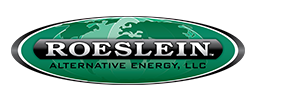Published by BIOMASS Magazine
Written By Erin Voegele
The California Air Resources Board has opened comment periods on several Low Carbon Fuel Standard Tier 2 applications for biogas-fuels in recent weeks, including those for facilities that plan to produce biogas-based hydrogen and renewable natural gas (RNG).
An application by Air Liquid Hydrogen Energy US LLC was posted on Dec. 24. The company, in part, plans to produce gaseous hydrogen from landfill gas. Documents published by CARB explains that Air Liquide Hydrogen Energy aims to certify two pathways for gaseous hydrogen by stem methane reformation (SMR) produced onsite of the LAX hydrogen station using landfill gas and fossil natural gas, respectively. The renewable hydrogen pathway uses book-and-claim accounting for RNG. A comment period on that pathway is open through Jan. 9.
CARB also posted a Tier 2 pathway application for biobased hydrogen filed by California-based High Mountain Fuels on Dec. 31. The company is seeking certification of two pathways for gaseous and liquid hydrogen produced by steam methane reformation at the Praxair Ontario facility using landfill gas-derived RNG directly supplied from the Altamont Bio-LNG plant. Comments on the pathway are due Jan. 15.
Several fuel pathway applications were also posted for RNG-based fuels. CARB posted an application submitted by AMP Americas LLC on Dec. 24 seeking provisional certification of a Tier 2 pathway for biomethane production through the anaerobic digestion of dairy manure at FairOaks, Indiana-based Renewable Dairy Fuels. Under the pathway, biomethane is to be pipeline injected and supplied to CNG vehicles in California as bio-compressed natural gas (bio-CNG) using book-and-claim accounting for biomethane. CARB documents explain that the RDF facility processes biogas from two digesters: site 3, which is co-located with the RDF upgrading facility, and RDF site 2, which is located within 3 miles of the upgrading facility. Each of the participating farms manage dairy manure using a heated mesophilic mixed plug-flow anaerobic digester and biogas control system. Biogas produced in each digester is supplied to the RDF upgrading facility via a dedicated pipeline. The pathway application pertains specifically to RDF site 2. A comment period on the pathway is open through Jan. 9
A Tier 2 pathway application filed by Missouri-based Elements Markets Renewable Energy LLC was posted by CARB on Dec. 27. The company is seeking certification of three Tier 2 pathways for biomethane produced through the anaerobic digestion of swine manure produced by Valley View Farms located in Greencastle, Missouri. According to the application, Smithfield owns and operates the swine farm. Roeslein Alternative Energy LLC and Smithfield jointly own and operate the biogas collection and processing equipment through Roeslein Alternative Energy of Missouri LLC. Elements Markets Renewable Energy purchases and markets the pipeline injected biomethane and imports it to California for use as transportation fuel using book-and-claim accounting for biomethane through its contracted California dispensers. The comment period on that pathway closes Jan. 13.
A separate pathway application filed by Elements Markets Renewable Energy was posted on Dec. 31. That application also seeks certification for three pathways and applies to the anaerobic digestion of swine manure produced by Harris, Missouri-based Locust Ridge Farms. Roeslein Alternative Energy of Missouri LLC owns and operates the biomass collection and processing equipment at that site. Elements Markets Renewable Energy purchases and markets the pipeline-injected biomethane produced at the site and imports it to California for use as transportation fuel using book-and-claim accounting for biomethane through its contracted California dispensers. A comment period on the pathway application closes Jan. 15.
Under LCFS regulations, CARB must post Tier 2 fuel pathway application packages to its website for public comment. Comments on each application package are accepted for 10 business days. Comments identifying potential application errors are forwarded to the applicant, who then must either correct the identified errors and submit a revised application package or submit a detailed written response explaining why no revisions are necessary. Pathway applications that receive no comments or those for which the applicant has submitted responses deemed sufficient by CARB are certified and posted to the General Certified Pathway List.
Additional information is available on the CARB website.

